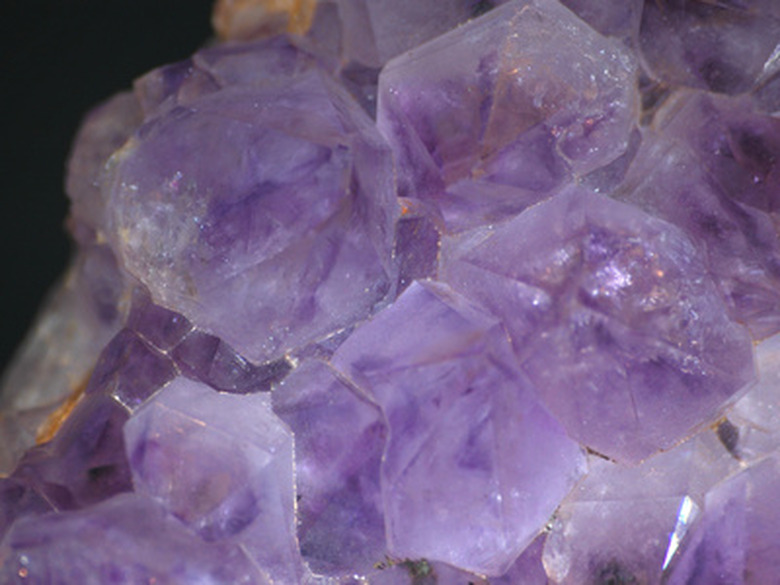How To Make Sodium Silicate From Sodium Hydroxide
Sodium silicate, also known as "water glass" or "liquid glass," is a compound used in many facets in industry, including automobile manufacturing, ceramics and even pigmenation of paints and cloths. Thanks to its very adhesive properties, it is often used to mend cracks or bind objects together strongly. This transparent, water-soluable compound can be created from products that can be found in the home (silica gel beads and bleach) or in a chemistry lab (using sodium hydroxide).
Step 1
Warm 10 ml of water in a test tube over a bunsen burner.
Step 2
Add 8 grams of sodium hydroxide to the test tube. Cap and shake until fully dissolved.
Step 3
Crush the silica gel beads to form 6 grams of fine silica powder. Silica gel beads can be found in the little packets that come in newly bought shoes. They are in little paper packets that read "Silica gel: Do not eat."
Step 4
Add the silica powder to the test tube. Warm over the Bunsen burner, and shake until dissolved. If the powder is not fully dissolved after ten minutes, add a little more water to the test tube and shake until fully dissolved.
Things Needed
- Silica gel beads
- Water
- Sodium hydroxide
- Bunsen Burner
- Test Tube
- Test Tube Cap
- Gloves
- Safety goggles
TL;DR (Too Long; Didn't Read)
The mass ratios in this experiment (6 and 8 grams) have been set up to match the stoichiometric ratios of the chemicals. If you wish to make more water glass, simply multiply both these numbers by the same constant.
Sodium hydroxide is a common ingredient in most basic household liquid cleaners.
Warning
Always wear safety goggles and gloves when performing scientific experiments. Parental supervision of children is required!
Cite This Article
MLA
Richert, Bailey. "How To Make Sodium Silicate From Sodium Hydroxide" sciencing.com, https://www.sciencing.com/make-sodium-silicate-sodium-hydroxide-6616066/. 24 April 2017.
APA
Richert, Bailey. (2017, April 24). How To Make Sodium Silicate From Sodium Hydroxide. sciencing.com. Retrieved from https://www.sciencing.com/make-sodium-silicate-sodium-hydroxide-6616066/
Chicago
Richert, Bailey. How To Make Sodium Silicate From Sodium Hydroxide last modified March 24, 2022. https://www.sciencing.com/make-sodium-silicate-sodium-hydroxide-6616066/
